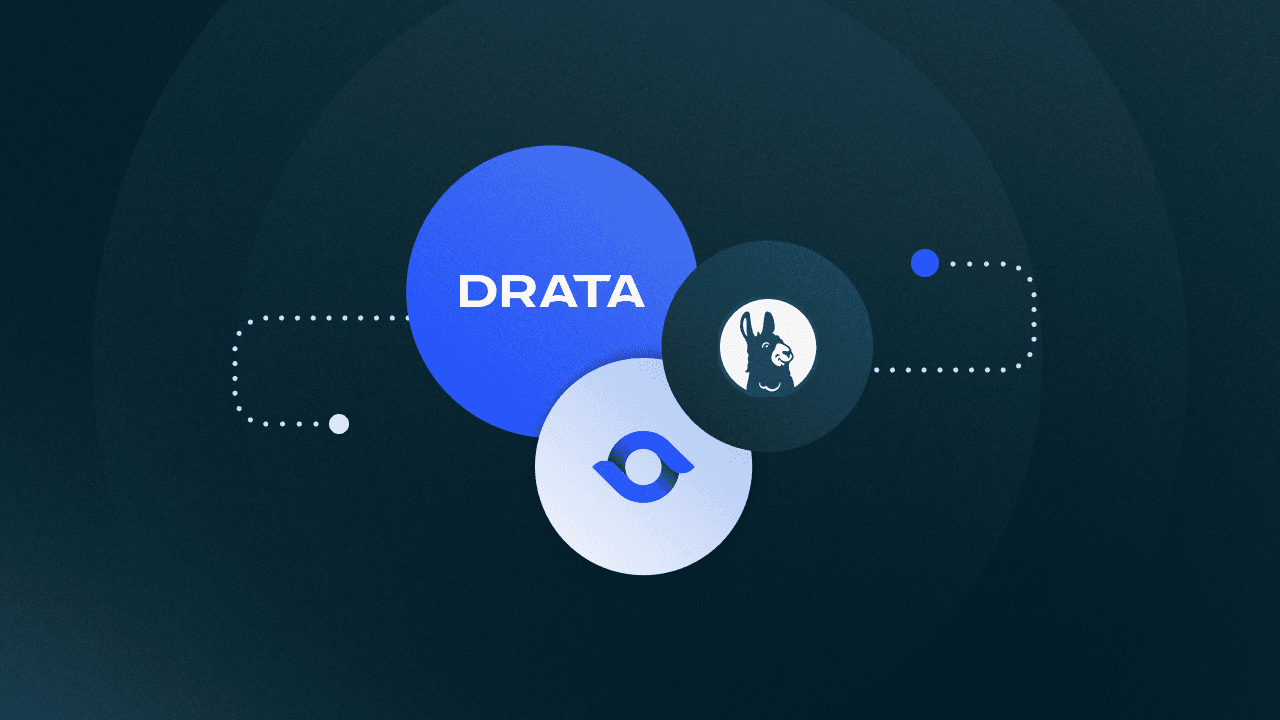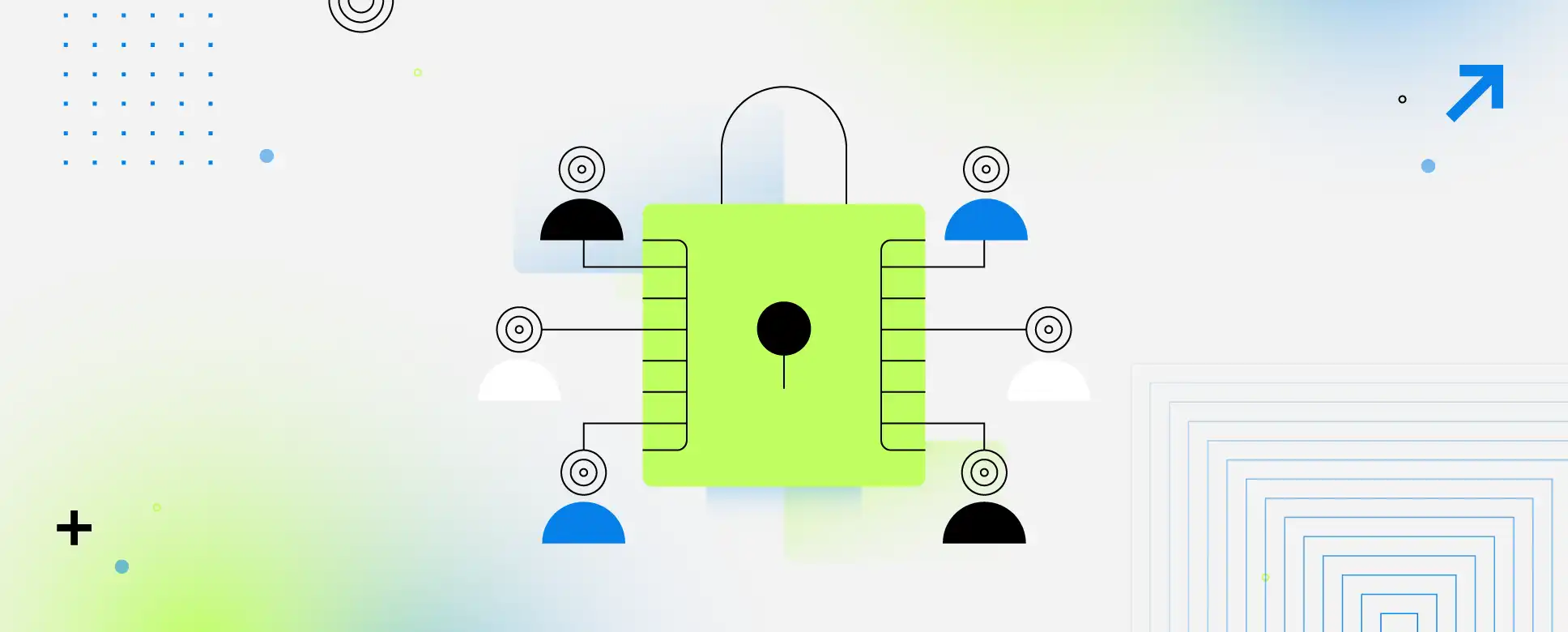12 Incident Response Plan Templates to Help Get You Started
These 12 incident response plan templates give you a solid foundation for building a plan that aligns with your organization and its threat environment.
Malware infections, data breaches, and other cyber incidents are inevitable. Despite this reality, many organizations remain unprepared: According to S&P Global, one in five companies have no cybersecurity incident response plan or procedures in place at all. Even among those that do have plans, preparedness varies significantly. While 42.7% of companies maintain and test their response strategy at least annually, another 37.3% either test less frequently or can't specify their testing schedule.
These statistics reveal a troubling gap between the certainty of cyber incidents and organizational readiness to handle them. When prevention fails, only preparation lets you resolve incidents quickly and minimize their potential impact. Incident response planning is essential to modern cybersecurity, but where do you start?
Incident response plan templates provide a framework you can customize to your organization's unique situation. In this article, we look at 12 incident response plan templates you can use to start building a plan that meets your organization's needs.
What is an Incident Response Plan?
Cybersecurity threats are constant. No matter how sophisticated your defenses may be, all it takes is one click on an attachment to expose your organization to malware and other attacks. Security events are inevitable. The only question is how well your organization handles incidents when they occur.
An incident response plan is a formal document that describes who is responsible for what during a cybersecurity incident.
The plan will also describe what people should do to detect, respond, and recover from the incident.
Without an incident response plan, there is no guarantee that your organization will handle events in the right way. Valuable time will tick away as people try to figure out what is happening, who should be in charge, and what actions to take. Necessary actions may never happen, making the event’s impact more severe.
Planning for common cybersecurity incidents lets your organization respond faster and more effectively while minimizing the impacts of each incident.
What are the Main Elements of an Incident Response Plan?
Whichever template you base your plans on, they tend to share the same main elements:
Purpose and scope: Defines the goal of the plan and what types of incidents it covers. It sets expectations for when the plan should be activated and which systems or data are in scope.
Threat scenarios: Lists the types of incidents your organization is most likely to face, such as ransomware, phishing attacks, insider threats, or service outages. It helps tailor the response process to real-world risks.
Roles and responsibilities: Outlines who is responsible for each step in the response process, from detection and containment to communication and recovery. This section ensures quick coordination and accountability during an incident.
Incident response process: Lays out the step-by-step process your team will follow when responding to an incident. It typically includes how to detect, report, contain, investigate, resolve, and review security events.
These often-cited incident response frameworks consist of the same elements grouped in different ways.
NIST
The National Institute of Standards and Technology (NIST) consolidates all incident planning into four main elements:
Preparation. Organizations cannot protect against every possible cyberattack. Effective preparation prioritizes identifying and addressing the most critical risks through regular assessments. This includes forming cross-functional incident response teams that go beyond IT to involve legal, HR, PR, and other essential departments. Clear procedures and regular practice drills are key to ensuring the team is prepared.
Detection and Analysis. This phase focuses on monitoring normal network behavior to spot anomalies. Teams identify early warning signs, such as credential stuffing attempts, and active incident indicators like antivirus alerts. When incidents arise, teams promptly verify their authenticity, origin, and severity. Predefined criteria guide which stakeholders are notified and whether external communications are required.
Containment, Eradication, and Recovery. When an incident happens, organizations may need to decide whether to isolate or shut down critical systems, which can disrupt operations. Having predetermined containment strategies makes these decisions more straightforward. After containing the threat, teams focus on removing it completely and restoring systems to normal operation, while also addressing the vulnerabilities that allowed the incident to occur.
Post-Incident Activity. This final phase turns incident response into an ongoing improvement process. It includes keeping detailed logs of network activity and response decisions, reviewing how the incident was handled, and pinpointing areas for improvement. Lessons learned should inform updates to procedures and training programs to enhance future response efforts.
SANS Institute
The SANS Institute expands NIST’s response activities into three separate sections.
Preparation. Just like NIST's, the preparation phase focuses on readying the organization before incidents occur. This includes developing policies, identifying critical assets, establishing communication channels, and training response teams. Organizations also need to ensure they have the right tools and technologies in place to detect and respond to incidents.
Identification. This phase involves detecting and confirming potential security incidents. Teams must determine whether an event constitutes a true security incident, gather initial evidence, document their findings, and make preliminary assessments of the incident's scope and impact.
Containment. The containment phase focuses on limiting damage and preventing further impact. It typically involves both short-term containment (like isolating affected systems) and long-term containment (such as applying temporary fixes to allow systems to be used in production while preparing for complete remediation). Teams must make careful decisions about containment strategies to balance security with business continuity.
Eradication. During this phase, teams work to completely remove the threat from the environment. This might involve removing malware, disabling breached accounts, identifying and fixing vulnerabilities, and closing security gaps that were exploited.
Recovery. The recovery phase focuses on restoring affected systems to normal operation. This includes validating that systems are clean, implementing additional monitoring, restoring from backups when necessary, and testing systems to verify they're functioning properly.
Lessons Learned. The final phase involves analyzing the incident and the organization's response to improve future preparedness. Teams document what happened, what worked well, what didn't work as planned, and what could be improved. This information is used to update incident response plans, enhance security policies, and strengthen training programs.
12 Incident Response Plan Templates
No two response plans are alike because no two enterprises have identical structures, processes, and risk tolerances. Incident response templates, such as the examples below, supply convenient starting points from which to begin your planning.
1. National Institute of Standards and Technology
NIST’s Special Publication 800-61, Computer Security Incident Handling Guide, is the foundation upon which many other incident response methodologies are based. NIST developed the guide to help federal agencies prepare for and respond to common security events. However, its usefulness is not limited to the government.
Private businesses, especially government contractors, may find SP 800-61’s detailed instructions useful as they develop their own incident response plans.
Created by: NIST
Pages: 79
Main sections:
Introduction
Organizing a Computer Security Incident Response Capability
Handling an Incident
Coordination and Information Sharing
2. Cybersecurity & Infrastructure Security Agency
America’s critical infrastructure, from railroads to power companies, is frequently targeted by cyber attacks. Given a major incident’s economic and societal impact, the U.S. Department of Homeland Security’s Cybersecurity & Infrastructure Security Agency (CISA) provides guidance to these organizations.
Cyber Resilience Review Supplemental Resource Guide, Volume 5: Incident Management describes the process for developing and evaluating an organization’s incident response plan.
Created by: CISA
Pages: 54
Main sections:
Introduction
Incident Management
Create an Incident Management Plan
Test the Incident Management Plan
Improve the Incident Management Plan
3. Department of Health and Human Services
Cybercriminals increasingly target hospitals and other healthcare organizations. Ransomware attacks can cripple the hospital’s ability to care for patients.
The U.S. Department of Health and Human Services (HHS) offers public and private healthcare institutions resources for improving their cybersecurity practices. Healthcare System Cybersecurity Readiness & Response Considerations adapts common frameworks such as CISA’s to the particular needs of hospitals and other patient care facilities.
Created by: HHS
Pages: 40
Main sections:
Introduction
Preparedness and Mitigation
Response
Recovery
4. UK National Cyber Security Centre
Organizations that collect sensitive data about British or European Union citizens must consider a security incident’s implications for data privacy. The UK’s National Cyber Security Centre’s Incident Response site enhances the NIST framework with respect to compliance with the EU’s GDPR and the UK’s DPA regulations.
Created by: NCSC
Pages: 7 with additional resources
Main sections:
Incident Management
Introduction: Incident Response Overview
Plan: Your Cyber Incident Response Processes
Build: A Cybersecurity Incident Response Team (CSIRT)
Develop: Technical Response Capabilities
Maintain: Build and Upkeep of Your Capability
5. Cloud Security Alliance
With governance and responsibilities divided across multiple cloud service providers (CSPs) and their clients, the lack of visibility can make incidents harder to detect and address.
To meet these unique challenges, the Cloud Security Alliance adapted NIST, SANS Institute, and other frameworks to create the Cloud Incident Response Framework. Among other topics, this document advises cloud users on negotiating with CSPs to support incident responses.
Created by: CSA
Pages: 36
Main sections:
Introduction
CIR Overview
CIR Framework
Phase 1: Preparation and Follow-on Review
Phase 2: Detection and Analysis
Phase 3: Containment, Eradication, and Recovery
Phase 4: Post-Mortem
Coordination and Information Sharing
6. Michigan State’s Department of Technology, Management & Budget (by Michigan Cyber Partners)
State and local governments face distinct cybersecurity challenges, balancing critical infrastructure and sensitive citizen data with often limited resources. To address these challenges, Michigan Cyber Partners developed a template based on what’s currently in use at multiple governments in Michigan.
This resource provides examples of common scenarios, such as ransomware attacks, phishing, and data breaches. It also includes easy-to-use forms and reporting templates designed to meet state-level requirements.
Created by: Michigan Cyber Partners
Pages: 25
Main sections:
Introduction
Incident Categories and Severity Levels
Responding to an Incident
Post-Incident Activities
Incident Response Examples
Security Incidents Reporting Template
7. State of California’s Department of Technology
The California Department of Technology provides a Breach Response and Notification Assessment Checklist for state agencies handling data breaches. This isn't strictly a template, but rather an assessment framework that ensures compliance with California's stringent data protection laws and notification requirements.
The checklist thoroughly covers California's specific legal requirements for breach notification, including compliance with Civil Code Section 1798.29 (when applicable).
The Department's website offers complementary resources, including templates for sample breach notices tailored to specific types of compromised information, such as driver's licenses, credit and debit cards, and genetic data.
Created by: California Department of Technology
Pages: 10
Main sections:
Assemble State Entity Response Team
Escalation/Internal Reporting
Impact Assessment/Coordination Meeting
Security Incident Reporting
Breach Notification Required by Law
Breach Notification Required by IT Policy
Timeliness of Notification
Source of Notification
Format of Notice
Content of Notice
Approval of the Notice
Method of Notification
Preparation for Follow-on Inquiries from Noticed Individuals
8. Australian Signals Directorate's Australian Cyber Security Centre (ASD's ACSC)
The Australian Signals Directorate's Australian Cyber Security Centre (ASD's ACSC) is Australia’s foremost authority on cybersecurity. As the nation’s front line against cyber threats, the ACSC leverages its expertise to help organizations prepare for and respond to cyber incidents.
Their incident response plan template is tailored to the specific regulatory and cybersecurity challenges faced by Australian organizations. It also includes practical resources like a readiness checklist and an incident categorization matrix.
Created by: Australian Signals Directorate's Australian Cyber Security Centre
Pages: 56
Main sections:
Purpose and Objectives
Standards and Frameworks
High-Level Incident Response Process
Common Security Incidents and Responses
Roles and Responsibilities
Communications
Supporting Procedures and Playbooks
Sector, Jurisdictional, and National Incident Response Arrangements
Incident Notification and Reporting
Incident Response Process
Post-incident Activities
9. CyberSecure Canada
CyberSecure Canada, a national initiative by the Government of Canada, is dedicated to enhancing the cybersecurity resilience of Canadian businesses through its certification program.
Their template serves as a practical guide tailored to the certification’s requirements. It provides a clear structure for organizations to document and execute their incident response plans while meeting national security standards.
The resource includes detailed sections on forming a Cyber Security Incident Response Team (CSIRT), categorizing incidents using a severity matrix, and employing the SANS Institute’s PICERL model for handling incidents.
Created by: CyberSecure Canada
Pages: 29
Main sections:
Purpose & Scope
Authority & Definitions
Cyber Security Incident Response Team (CSIRT) Structure
Incident Types & Severity Matrix
Incident Handling Process (PICERL Model)
Testing & Review Cycle
Approvals
10. Public Risk Management Association (PRIMA)
The Public Risk Management Association (PRIMA) has established itself as the largest risk management association dedicated to public sector risk management. It develops resources that address the unique challenges faced by government entities, educational institutions, and other public organizations.
PRIMA’s template follows the NIST framework and includes comprehensive sections that guide organizations through incident identification, containment, and recovery.
Created by: Public Risk Management Association
Pages: 22
Main sections:
Definitions
Roles & Responsibilities
Assessment
Detection
Containment
Investigation & Analysis
Recovery
Post-incident Follow-up
11. StateRAMP
StateRAMP is a nonprofit organization dedicated to enhancing the cybersecurity posture of cloud service providers working with state and local governments. It provides a standardized approach to verifying and monitoring the security of cloud solutions to ensure compliance with government cybersecurity requirements.
StateRAMP created a standardized incident response plan template that follows NIST’s framework and includes additional templates for after-action reports, incident response forms, and key personnel contact lists.
Created by: StateRAMP
Pages: 25
Main sections:
Introduction and Purpose
System Description
Incident Response Policy
Roles and Responsibilities
Event and Incident Definitions
Preparation
Detection and Analysis
Containment, Eradication, and Recovery
12. American Institute of Certified Public Accountants (AICPA)
The AICPA (American Institute of Certified Public Accountants) is the leading professional organization for CPAs in the United States, setting standards for audits, ethics, and quality control in the accounting profession.
Beyond accounting, the AICPA also provides resources that promote data privacy and security. Their contributions include an incident response plan template, designed to help organizations across industries build their own incident response plans.
Created by: American Institute of Certified Public Accountants
Pages: 34
Main sections:
Incident Response Plan
Incident Response Team
Incident Response Team Notification
Types of Accidents
Definitions of a Security Breach
Requirements
Streamline Your Incident Responses With Drata
Drata’s compliance monitoring platform keeps a constant watch over your security posture, giving incident response teams the visibility they need to investigate and mitigate new events.
Schedule a demo today to see how Drata can streamline your incident responses.
Frequently Asked Questions (FAQs)
Below we answer common questions about incident response planning.
What Are the Best Practices for Designing an Incident Response Plan?
Your incident response plan should be simple, specific, and actionable. As you design your own (whether or not you base it on a template), make sure to:
Use realistic threat scenarios. Base your plan on incidents your team is most likely to encounter (e.g., credential theft, cloud misconfigurations, or phishing attacks) and group them based on type and impact level.
Assign clear roles. Everyone involved should know their responsibilities, including who declares an incident, who communicates with stakeholders, and who leads remediation.
Keep the process concise and easy to repeat. Outline step-by-step actions your team is able to follow under pressure.
Run tabletop exercises. Test your plan before you need it. Simulated incidents expose gaps and help teams build confidence.
Update regularly. Your systems, team, and risks change over time. Revisit the plan after incidents, audits, or major infrastructure updates.
How Do We Plan for Every Possible Threat?
Developing plans for every potential incident is not practical. However, your risk management process should have identified the most likely high-impact threats. Prioritize the most severe risks and create specific plans for each.
Do We Need to Include Every Employee?
Every employee should understand their role in protecting the company’s information resources. Certain employees should also know what the incident response team may ask of them during an event. All incident response team members must understand what actions to take during an event, what decision-making authority they have, and who to communicate with.
How Specific Should We Make Our Plans?
Incident response plans should be as detailed as necessary for people to understand what they should do and the criteria for escalating the response.
Do We Discuss Incidents Outside the Company?
Many security incidents are not severe enough to require disclosure to outside parties. Significant events may require disclosure to regulators, law enforcement organizations, customers, or the media. Assign responsibility for these communications to specific employees and supply any relevant guidance for how and when these notifications should go out.
How Often Should We Revisit the Plan?
No plan is set in stone; incident response plans must evolve with the threat landscape. Use each incident as a learning opportunity and modify the plan accordingly. Review the plan annually or when significant business changes occur to keep your incident responses aligned with your organization.
If Every Event Triggers an Alert, How Do We Know What’s Important?
Alert fatigue can undermine security team productivity and slow responses to significant events. Automated systems can monitor security controls and flag significant incidents for immediate response.








